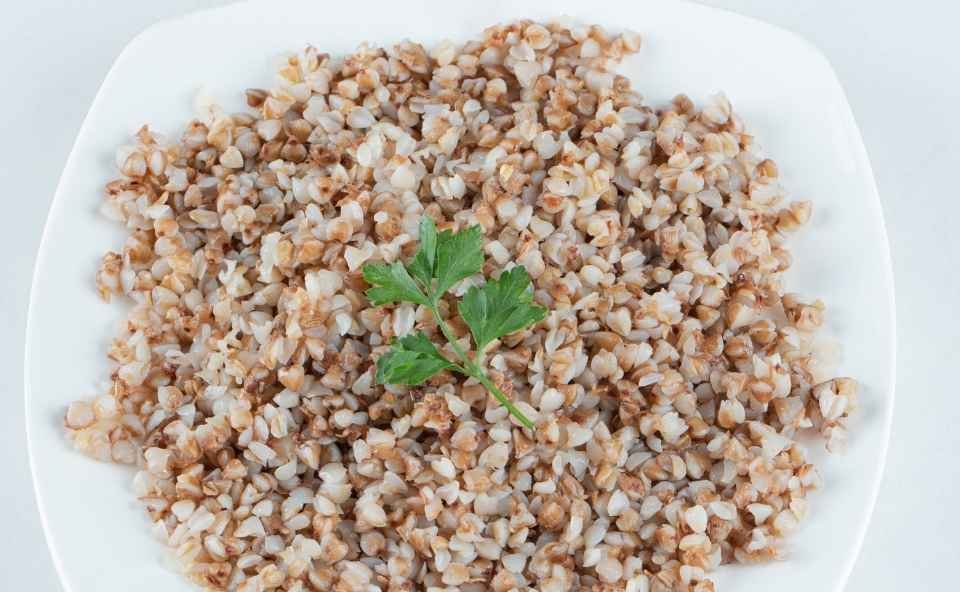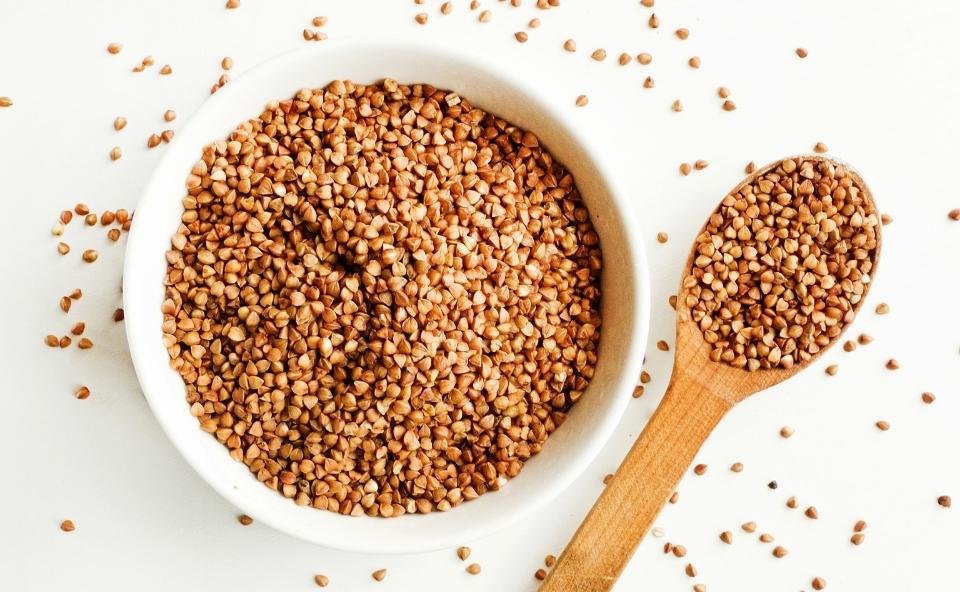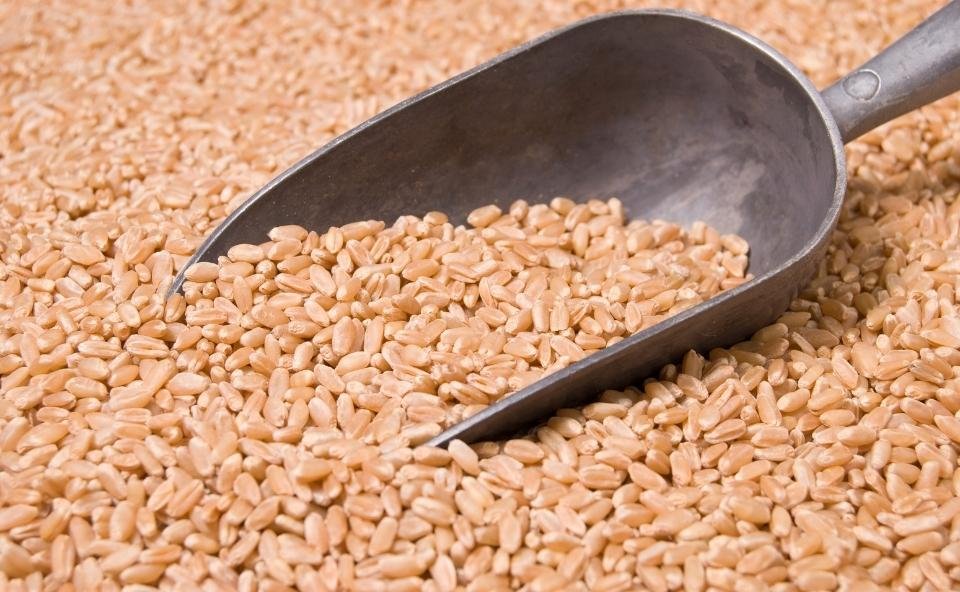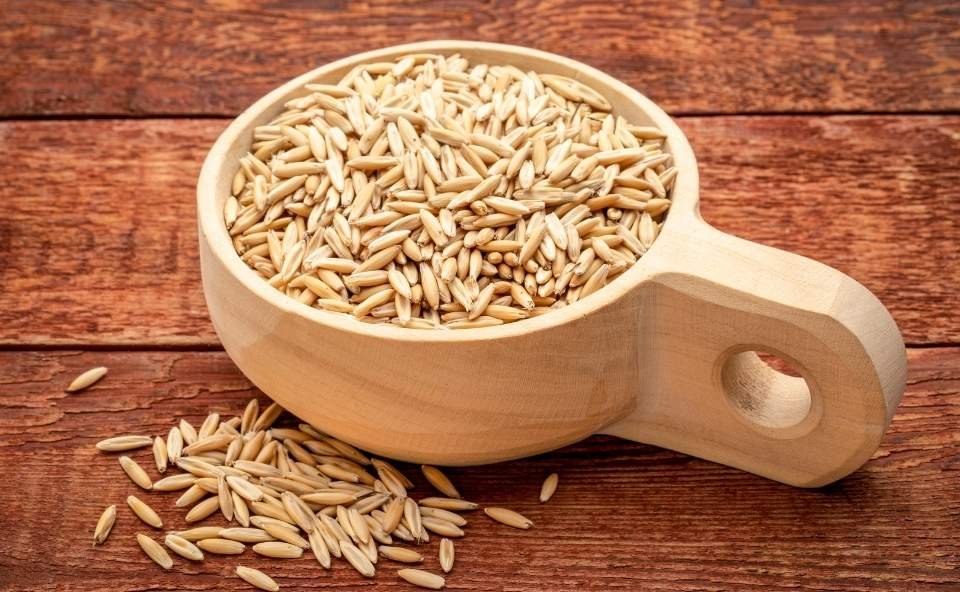I still remember the first time I tried buckwheat, its deep earthy, and nutty flavor instantly stood out. Unlike the typical cereal grain, this tiny yet powerful seed comes from a flowering plant related to rhubarb. Despite its name, it has nothing to do with wheat, making it a fantastic gluten-free powerhouse for those avoiding gluten. What I love most about it is its versatility, you can find it as roasted buckwheat (kasha), unroasted groats, finely processed into flour, or shaped into flakes. Its triangular seeds may look different from traditional grains, but it fits right into many culinary creations, from pancakes to soba noodles.
For me, the biggest reason to keep buckwheat in my kitchen is its health benefits. It’s packed with fiber, vitamin B6, and essential minerals like magnesium and zinc, which help support heart health and reduce blood sugar levels. I also appreciate its natural antioxidant properties, thanks to its powerful plant compounds.
For me, buckwheat is pure comfort, whether as a warm porridge or mixed with rice for extra texture. I love how roasting brings out its robust flavor, with a hint of hops and a touch of rose petals. Watching the pale green groats turn light tan as they toast, becoming tender and grain-like, always feels satisfying. I’ve used it as a versatile substitute for wheat flour in everything from baked goods to hearty breakfasts.
It may not be part of the Poaceae cereal family, but in my kitchen, it’s an honorary grain. If you haven’t tried it yet, now’s the perfect time to explore this wholesome pseudocereal!
History
“Buckwheat has been cultivated for over 6,000 years, originating in Northern China around 4,000 BCE before spreading to Tibet, the Himalayas, and eventually Europe and Japan. European colonists later introduced it to America, where it thrived until the late 19th century. However, with the rise of nitrogen fertilizers, its cultivation declined in favor of wheat and corn.

Buckwheat Plant.
Fortunately, buckwheat saw a revival in the 1970s, thanks to its gluten-free appeal and health benefits. Today, it remains a nutritious and versatile grain, with Russia, China, and Ukraine leading its production. It’s incredible how this ancient crop has stood the test of time, continuing to nourish people around the world”. (Wikipedia/Buckwheat)
Varieties
Growing up, I always loved experimenting with different grains, but buckwheat quickly became one of my favorites. It has various types.
- Groats; One of the most common forms is groats, the whole kernels of buckwheat, available raw or roasted. When cooked, they develop a chewy texture with a rich nutty flavor, making them a fantastic alternative to rice and other grains. I enjoy a warm bowl of breakfast porridge made from buckwheat groats, it’s hearty, filling, and full of goodness.
- Buckwheat Flour; Another fantastic option is buckwheat flour, a great alternative to wheat for anyone following a gluten-free diet. I often use it in baking, adding its distinct taste to pancakes, waffles, bread, and other recipes. When I first tried Soba noodles in a traditional Japanese cuisine setting, I was amazed by their smooth texture and deep flavor. Made from buckwheat flour, these noodles are perfect in soups, stir-fries, or even served cold with a dipping sauce.
- Snacks; For a quick snack, I love munching on puffed buckwheat, which is light, crunchy, and nutritious.
Whether in a home-cooked meal or a quick snack, buckwheat has become a staple in my kitchen, offering both taste and health benefits in every bite!
Nutritional Profile
I’ve always believed that the best foods are the ones that nourish the body while keeping things simple. Buckwheat is exactly that a naturally wholesome pseudocereal packed with various minerals, antioxidants, and essential nutrients.
| Nutritional Facts (Buckwheat) Serving 1 | % Daily Value |
|---|---|
| Calories 142 | |
| Total Fat 1.1g | 1% |
| Saturated Fat 0.2g | 1% |
| Cholesterol 0mg | 0% |
| Sodium 5mg | 0% |
| Total Carbohydrate 30.7g | 11% |
| Dietary Fiber 4.2g | 15% |
| Total Sugar 0g | |
| Protein 4.8g | |
| Calcium 7mg | 1% |
| Iron 1mg | 6% |
| Potassium 131mg | 3% |
| Buckwheat |
That’s one reason why I love adding it to my meals.
1. Balanced Carbs for Steady Energy
One thing I’ve noticed about buckwheat is that it keeps me full and energized for hours. That’s because its main dietary component is carbs, stored in the form of starch, which serves as the primary storage unit in plants. But unlike refined carbs, buckwheat has a low to medium glycemic index (GI), meaning it doesn’t cause those annoying unhealthy spikes in blood sugar levels after a meal. This makes it a great option for those who, like me, prefer foods that keep energy steady throughout the day.
2. Fiber for a Healthy Gut
Gut health has always been important to me, and buckwheat plays a big role in keeping it strong. Its fiber-rich content, including cellulose, lignin, and resistant starch, supports digestion while the dark buckwheat flour husk adds both flavor and nutrition. Research even suggests that these compounds support digestive cells and may lower the risk of cancer, yet another reason to make buckwheat a daily staple!
3. High-Quality Protein with Added Benefits
One of the things I love most about buckwheat is its protein content. It has a well-balanced amino acid profile, making it a great plant-based protein source. I especially appreciate that it’s rich in lysine and arginine, two essential amino acids for overall health. While its digestibility is slightly lower due to antinutrients like protease inhibitors and tannins, the benefits far outweigh the downsides. With its impressive nutritional value, buckwheat has earned a permanent spot in my kitchen, and I wouldn’t have it any other way!
4. Minerals
Compared to rice, wheat, and corn, buckwheat is in a league of its own when it comes to nutrition. And if we’re talking about the best of the best, Tartary buckwheat is the true standout, offering even higher levels of vital nutrients.
One thing I appreciate most is how well my body absorbs the minerals in buckwheat. Unlike some grains loaded with phytic acid (which blocks mineral absorption), buckwheat is naturally low in this inhibitor. That means when I enjoy a bowl of buckwheat groats, I know I’m getting the full benefit of its nutrient-rich goodness.
Essential Minerals in Buckwheat
- Magnesium – Helps lower the risk of type 2 diabetes and supports heart health.
- Iron – Keeps energy levels up and prevents anemia by improving oxygen transport.
- Phosphorus – Plays a key role in repairing and maintaining body tissues.
With so many health benefits packed into these tiny seeds, it’s no wonder buckwheat has earned a permanent spot in my pantry.
Cook Time
I love how buckwheat can be prepared in so many different ways. Whether I cook it on the stovetop, in an Instant Pot, or use my rice cooker, each method has its charm.
- The Stovetop takes about 20 minutes.
- Instant Pot needs 25 minutes for perfectly cooked groats.
- The Rice cooker saves my day, getting it done in just 15 minutes.

When I bake, buckwheat flour is my go-to, and I always make sure to follow the recipe carefully. The key is using the right method and checking the following steps to get the best results. Once cooked, I love the feeling of running a fork through the fluffy grains, gently lifting them to see their perfect texture.
Baking with Buckwheat Flour
I remember the first time I tried substituting buckwheat flour for wheat in a recipe, the texture was much denser, and the consistency felt a bit off. Since buckwheat lacks gluten, I quickly realized it wouldn’t stretch or rise the same way, making the final result noticeably different in both flavor and color.
Over time, I found that using a blend of regular and buckwheat flour gave me better results, maintaining a balance of textures and flavors.

Now, I love using it in recipes like pancakes, waffles, muffins, and quick bread, where its unique qualities truly complement the dish rather than overpowering it.
My Tips for Storing and Preparing Buckwheat
Proper storage makes a huge difference in its freshness and nutritional value. Whether you have uncooked groats or flour, always store them in an airtight container in a cool, dry place, away from sunlight and moisture. This prevents spoilage, and the growth of molds, and helps the grain last longer.
In my experience, buckwheat can stay good for 1-2 years, while the flour remains fresh for about 6-12 months. If you want to keep it even longer, I highly recommend using freezer-friendly containers, this can double its shelf life, ensuring you always have some on hand when you need it.
When it comes to preparation, I always rinse unroasted groats before cooking, as it helps remove any bitterness. However, if you’re using roasted varieties like kasha, there’s no need for rinsing, which simplifies the process.
For the best flavor and texture, I make sure to use buckwheat within a year, this keeps it at its peak quality. With the right storage and handling, you can always enjoy the best results in your favorite dishes!
My Favorite Ways to Enjoy Buckwheat
- Pancakes, Blinis, and Crepes; Ever since I started using buckwheat flour in my kitchen, my breakfast routine has completely changed. I love making pancakes, blinis, and crepes with it because it adds a rich hue and a deep, earthy finish that makes them extra special. When I’m in the mood for something savory, I mix in fresh herbs like rosemary and a little ground pepper. If I want something sweeter, a drizzle of pure maple syrup or a spoonful of date paste does the trick. These treats also make a great snack or an elegant party when I have guests over.
- Soba Noodles; One of my go-to quick meals is this. These Japanese noodles, made from buckwheat, are easy to find in any grocery store. I cook them following the package directions, then chill them in the fridge for a cold noodle salad. Tossing them with sliced bell peppers, jalapeño, scallions, minced garlic, and a dash of low-sodium soy sauce or tamari gives them a fresh and bold taste. On colder days, I love adding them to a steaming hot broth with some chopped cilantro on top.
- Granola or Trail Mix; For a quick energy boost, I always keep a jar of granola or trail mix with sprouted buckwheat groats and dried fruit. It’s my favorite morning fuel and a lifesaver when I need an afternoon power snack to keep me going.
- Sweet Porridge; When I want something warm and comforting, I make a sweet porridge with roasted buckwheat. It cooks down quickly, and I love topping it with fresh fruit for a naturally sweet flavor. If I’m in the mood for something different, I go the savory route with toasted nori strips and other flavorful ingredients.
- Hearty Risotto; For dinner, I like making a hearty risotto with a mix of whole grains like rice and farro. The multi-grain combination gives it an amazing texture and flavor, especially when paired with roasted vegetables that are in season. It’s a complete meal that’s both satisfying and healthy.
- Flour Mixing; Baking with buckwheat flour is another favorite of mine. I love blending it with whole wheat flour or almond flour to create baked goods that are extra tender. The combination brings out a rich hue and an earthy finish that makes everything taste wholesome and homemade.
- Healthy Pairings; One thing I’ve learned over time is that buckwheat has a slightly bitter taste on its own, so I always use natural pairings to balance it out. A touch of citrus, a drizzle of pure maple syrup, or even a bit of date paste can make all the difference.
Whether I’m cooking breakfast, lunch, or dinner, I always find new ways to enjoy this amazing ingredient!
Best Alternatives for Buckwheat
I’ve always loved buckwheat, but there were times when I needed substitutes due to allergies, dietary preferences, or simple unavailability. Over the years, I’ve found some great alternatives that work just as well.
- Quinoa; It has been one of my favorites, it has a similar texture and fits perfectly in dishes like salads, as a rice substitute, or even in baking.
- Millet; If you’re looking for something with a mildly sweet and nutty taste, millet is a fantastic grain that’s naturally gluten-free and can be cooked just like rice.
- Brown Rice and Wild Rice; I’ve also used both from time to time when I wanted a hearty base for my recipes, especially when texture mattered more than flavor, even though they have a different taste from buckwheat.
- Oats; When it comes to baking, I always keep oats in my pantry especially certified gluten-free ones.
- Oat flour; It works well in many recipes where buckwheat is required.
- Arrowroot Flour and Tapioca Flour; I’ve also experimented with them from time to time, as they have excellent binding properties and serve the same purpose in certain baked goods.
Choosing the right ingredient for a dish depends on the outcome you’re aiming for. Sometimes, a little experimentation is necessary to achieve the desired taste, but that’s what makes cooking fun!
Comparing with Other Grains
I’ve found buckwheat to be softer and quicker to cook than beans, making it a great option for my diet. Its protein content, texture, and nutritional benefits stand out, and here are these comparisons to explore its differences, uses, and cooking methods.
Buckwheat Recipes
If you enjoy cooking with buckwheat like I do, you’ll love my Buckwheat Recipes, packed with delicious and easy recipes!
Fluffy, fruity, and full of goodness—your new favorite muffin!
Soft and hearty gluten-free buckwheat bread is perfect for everyday meals.
Frequently Asked Questions
What does buckwheat look like?
I’ve always found buckwheat to have a charming shape, some call it triangle-shaped, but to me, it looks more like a tiny heart. It’s fascinating how this grain is larger than quinoa yet smaller than barley, with a warm golden brown color that stands out.
When cooked, the grains soften and burst open, creating a wonderfully mushy consistency that feels light and comforting. The color turns lighter, making it a perfect ingredient for a variety of dishes.
How Does Buckwheat Taste?
The first time I tried buckwheat, I was surprised by its nutty and earthy flavor. It has a mild taste but can vary depending on how it’s prepared and what it’s paired with in a recipe. Some find its flavor stronger than familiar grains like bulgur or farro, making it more of an acquired taste. When cooked, it becomes soft and slightly mushy, yet it still has a pleasant chew that makes every bite satisfying.

Hi, I’m the voice behind The Bean Bite — someone who’s genuinely obsessed with beans! What started as a simple love for homemade lentil stew turned into a journey of discovering bean varieties, cooking tips, and their amazing health benefits. This site is my way of sharing that joy with you — one bean at a time.



